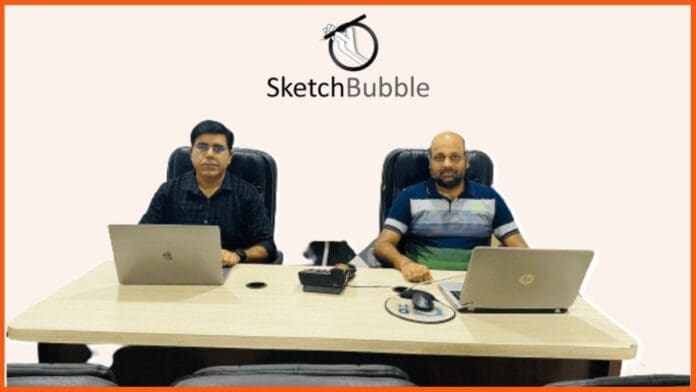As generative AI reshapes the landscape of design, SketchBubble emerges as a pioneering force, merging human creativity with cutting-edge presentation solutions.
Harnessing the power of SEO as a strategic tool, SketchBubble effectively identifies trending topics in presentations, positioning itself to outpace competitors in a rapidly evolving market. The startup proudly serves prominent corporations, including Adobe, IBM, HP, Toyota, Mercedes-Benz, Volvo, and Vodafone, boasting an impressive base of over 20,000 paid users. In a post-pandemic world, where digital transformation is driving innovation, effective communication has become essential for engaging stakeholders and customers alike. However, the methods for conveying an organization’s vision, values, data, and strategies are evolving swiftly, especially with the rise of platforms like Zoom, Pitch, and Slack that foster instant and collaborative communication. Despite their longstanding presence, traditional presentation tools such as Microsoft PowerPoint, Google Slides, and Apple Keynote face the risk of being overshadowed by this new wave of technological advancements.
Yet, the classic slide format, which has been a staple in corporate presentations globally, is unlikely to disappear anytime soon—thanks to the innovative efforts of SketchBubble. For a decade, founders Ashish Arora, Rohit Khariwal, and Pankaj Narang have blended their design expertise with technological trends to create an impressive range of templates compatible with all major platforms (Google, Apple, and Microsoft). SketchBubble currently offers more than 200,000 customizable slides through subscription plans and over 1,000 free templates, alongside diagrams, charts, maps, icons, and other copyright-free design elements. These resources cover various trending domains, including pitch decks, technology, finance, e-learning, healthcare, and organizational excellence, featuring both static and animated visuals. As generative AI tools like ChatGPT gain traction in creative work, SketchBubble is committed to delivering presentation designs that consistently outshine AI-generated options. Arora asserts, “Our objective is to create designs that remain ahead of AI presentations. This is crucial for our survival as a template provider. We firmly believe that human creativity and uniqueness will always be essential.”
With nearly half a million subscribers—including over 20,000 paid users—SketchBubble has achieved remarkable success, reporting 50% year-over-year revenue growth since 2020. The founders, all graduates of the Malaviya National Institute of Technology (MNIT) in Jaipur, initially established a software startup called InfoShore in 2008. In 2010, while working on a mobile tracker and seeking funding, they recognized the need for a compelling pitch deck design. This realization led to the launch of SketchBubble in 2014, an online platform designed to streamline the presentation creation process with pre-made templates. Their business model is straightforward: individuals can choose from free templates or subscribe to plans priced at $49 monthly, $99 quarterly, or $199 annually, with varying levels of access to an extensive template library. Enterprises, however, can only opt for an annual subscription.
The global presentation software market is projected to exceed $16 billion by 2031, up from $6.7 billion in 2024, growing at a compound annual growth rate (CAGR) of 13.5%. While specific figures for India are not readily available, the Asia-Pacific region is emerging as a rapidly growing market, driven by the rise of enterprises and increasing digitalization across various industries. This development presents both opportunities and challenges for SketchBubble as it strives to blend human creativity with an increasingly technology-driven landscape dominated by generative AI.
Generative AI has made significant advances in automating creative processes, including design and content generation. A recent survey by HubSpot revealed that 55% of web designers reported their companies or major freelance clients encouraged the use of generative AI tools for their advantages in idea generation, cost-effectiveness, and time-saving. Conversely, 16% of respondents noted that their clients discouraged the use of such tools.
While generative AI has disrupted the creative landscape by efficiently organizing information from vast datasets and producing visually appealing presentations, it still struggles to fully capture the essence of creativity. According to Arora, three essential elements—crafting a compelling narrative, creating emotional connections, and improvising in real time—are crucial for effectively engaging an audience. Achieving this connection is the ultimate goal of the presentation industry, and neglecting the human element may hinder its effectiveness.
Many industry experts believe that generative AI will serve as a valuable brainstorming and execution tool, enhancing human creativity rather than replacing it. Ultimately, success in this evolving field will depend on finding the right balance between human ingenuity and technological advancements. Otherwise, a significant portion of India’s $3.9 billion creator economy (projected to reach $528.4 billion globally by 2030) could face challenges, leaving individuals grappling with a machine-driven design paradigm that fails to deliver the intended impact.

